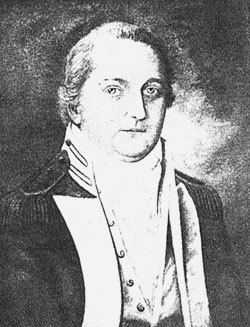Succeeded by Thomas Lee Name John Drayton | ||
 | ||
Succeeded by | ||
Selling Drayton Hall
John Drayton (June 22, 1766 – November 27, 1822) was a South Carolinian judge and politician; he was Governor of South Carolina from 1800 to 1802 and 1808 to 1810. As governor, he was noted for establishing South Carolina College, and for championing the removal of property restrictions on the franchise. He served as a United States district judge in South Carolina from 1812 until his death.
Contents
- Selling Drayton Hall
- Drayton Hall Charlston SC
- Early life and career
- Early rise
- South Carolina College
- Second time as governor
- Later life and career
- References
Drayton Hall Charlston, SC
Early life and career
Drayton was born on Magnolia Plantation on the Ashley River in St. Andrews Parish near Charleston. He was educated at the College of New Jersey during the American Revolutionary War and afterward read law at Inner Temple in London to prepare as an attorney.
He began private practice in Charleston from 1788 to 1794. He resumed from 1796 to 1798. He also served as a warden of the City of Charleston in 1788.
Early rise
In 1792, Drayton was elected to the South Carolina House of Representatives and was a member until 1798, when the General Assembly elected him as the 18th Lieutenant Governor of South Carolina. Upon the death of Edward Rutledge on January 23, 1800, Drayton was elected by the General Assembly to become Governor of South Carolina for the remainder of the term. They chose him to serve out a full two-year term in 1800 because of his strong republicanism.
South Carolina College
The most important act during Drayton's first full term was the establishment of South Carolina College. Drayton had pushed for a state-funded college immediately when he became governor upon the death of Edward Rutledge, but it was not until after his election that the General Assembly created and provide funds for a college. The location of Columbia near the State House was favored by Drayton because it was a central location that would provide an opportunity at higher education for all white male South Carolinians. In addition, he intended for the future leaders of South Carolina to be educated together in order to quell any divisions between the Lowcountry and the Backcountry. The General Assembly followed the direction of Governor Drayton and appropriated $50,000 to construct the college in Columbia and another 46,000 for the salaries of the faculty.
Second time as governor
Upon leaving the governorship in 1802, Drayton returned to Charleston. The General Assembly elected him to the South Carolina Senate in 1805. After three years, the General Assembly elected Drayton for a second two-year term as governor in 1808. Drayton and the General Assembly continued the Republican reforms by expanding the suffrage to all white men, regardless of status or wealth.
Later life and career
After leaving the governorship for a final time, Drayton returned to private practice until 1812. On May 5, 1812, he was nominated by President James Madison to a seat on the United States District Court for the District of South Carolina vacated by Thomas Bee. Drayton was confirmed by the United States Senate on May 7, 1812, and received his commission the same day, serving on the bench until his death.
Drayton issued perhaps the earliest judicial decision holding that, under the laws of the United States, slaves captured in time of war on enemy ships could not be claimed as property.
A productive writer, Drayton authored several works related to South Carolina:
On November 27, 1822, Drayton died. He was buried in Charleston.
